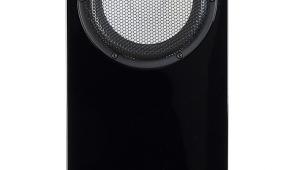KEF R3 loudspeaker Sidebar
12th Gen Uni-Q
It was the arrival of high-strength neodymium-iron-boron magnets which, 30 years ago, allowed KEF to place a dome tweeter where a cone driver's dust cap would conventionally be, thereby creating its first Uni-Q coaxial driver (which KEF today refers to as an array). The Uni-Q driver in the new R series is a 12th-generation design, and comparison with photos of the 1988 original indicates how much has changed. The principal benefit of Uni-Q is to directivity: it removes the off-axis 'lobing' at crossover that occurs with drivers having physically displaced acoustic centres, and it allows the directivity of the midrange and treble output to be matched at crossover, avoiding a step-change.
It was the arrival of high-strength neodymium-iron-boron magnets which, 30 years ago, allowed KEF to place a dome tweeter where a cone driver's dust cap would conventionally be, thereby creating its first Uni-Q coaxial driver (which KEF today refers to as an array). The Uni-Q driver in the new R series is a 12th-generation design, and comparison with photos of the 1988 original indicates how much has changed. The principal benefit of Uni-Q is to directivity: it removes the off-axis 'lobing' at crossover that occurs with drivers having physically displaced acoustic centres, and it allows the directivity of the midrange and treble output to be matched at crossover, avoiding a step-change.

KEF long ago solved the problem of treble unevenness resulting from horn-like reflections at the 'mouth' of the cone diaphragm by paying meticulous attention to the profile of the cone and its surround. A new refinement, inherited from the Reference series, is the use of a compliant joint between the midrange driver's voice coil and aluminium cone which helps control breakup resonances above the passband. KH

















































